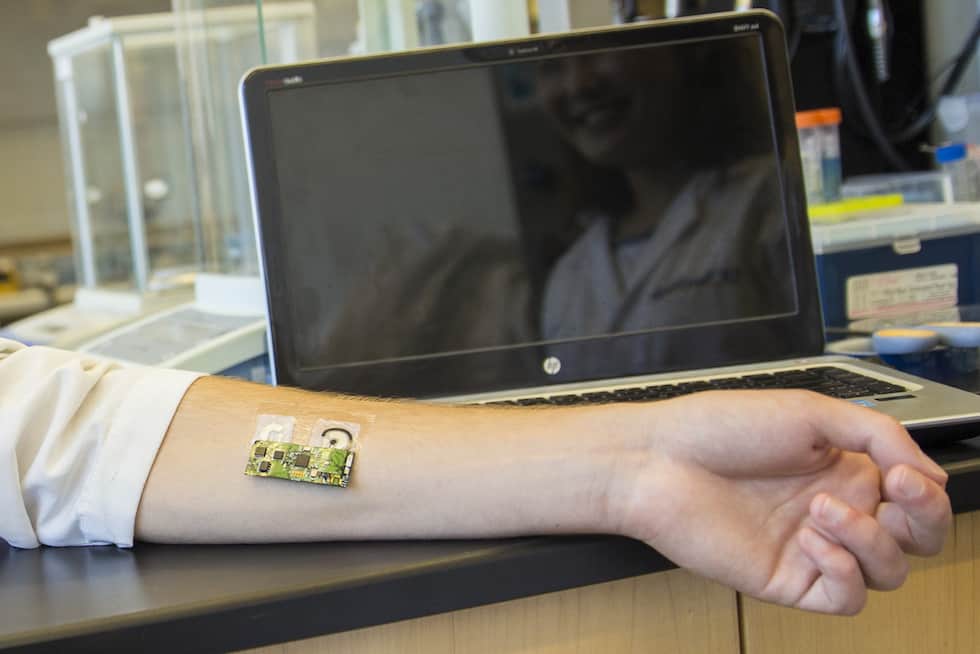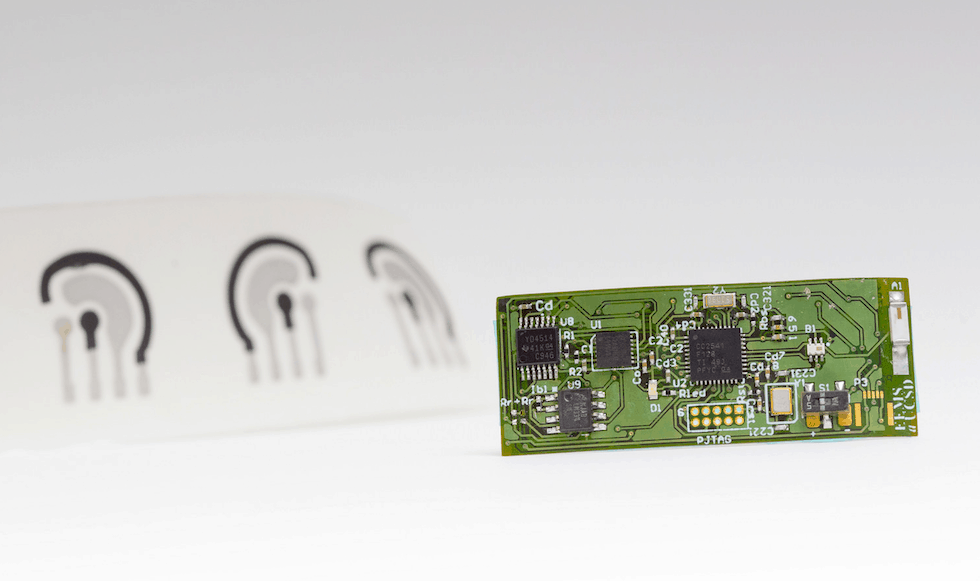
The device, developed at the University of California San Diego, can be worn on the skin and could be used by doctors and police officers for continuous, non-invasive and real-time monitoring of blood alcohol content.
The device is said to consist of a temporary tattoo -- which sticks to the skin, induces sweat and electrochemically detects the alcohol level -- and a portable flexible electronic circuit board, which is connected to the tattoo by a magnet and can communicate the information to a mobile device via Bluetooth. The work, led by nanoengineering Prof Joseph Wang and electrical engineering professor Patrick Mercier, both at UC San Diego, was published recently in the journal ACS Sensors.
"This technology provides an accurate, convenient and quick way to monitor alcohol consumption to help prevent people from driving while intoxicated," Wang said in a statement. The device could be integrated with a car's alcohol ignition interlocks, or friends could use it to check up on each other before handing over the car keys, he added.
Blood alcohol concentration is the most accurate indicator of a person's alcohol level, but measuring it requires pricking a finger. Breathalysers are non-invasive, but they can give false readings; the alcohol level detected in a person's breath right after taking a drink would typically appear higher than that person's actual blood alcohol concentration. Mouthwash can also influence the outcome of a breathalyser test.
Recent research has shown that blood alcohol concentration can also be estimated by measuring alcohol levels in insensible sweat - which is perspiration that happens before it's perceived as moisture on the skin - but this measurement can be up to two hours behind the actual blood alcohol reading. The alcohol level in sensible sweat -- the sweat that's typically seen -- is a better real-time indicator of the blood alcohol concentration, but so far the systems that can measure this are neither portable nor fit for wearing on the body.
Now, UC San Diego researchers have developed an alcohol sensor that's wearable, portable and could accurately monitor alcohol level in sweat within 15 minutes.
"What's also innovative about this technology is that the wearer doesn't need to be exercising or sweating already. The user can put on the patch and within a few minutes get a reading that's well correlated to his or her blood alcohol concentration. Such a device hasn't been available until now," Mercier said.

Wang and Mercier, the director and co-director, respectively, of the UC San Diego Center for Wearable Sensors, collaborated to develop the device. Wang's group fabricated the tattoo, equipped with screen-printed electrodes and a small hydrogel patch containing pilocarpine, a drug that passes through the skin and induces sweat.
Mercier's group developed the printed flexible electronic circuit board that powers the tattoo and can communicate wirelessly with a mobile device. His team also developed the magnetic connector that attaches the electronic circuit board to the tattoo, as well as the device's phone app.
"This device can use a Bluetooth connection, which is something a breathalyser can't do. We've found a way to make the electronics portable and wireless, which are important for practical, real-life use," said Somayeh Imani, an electrical engineering PhD student in Mercier's lab and a co-first author on the paper.
The tattoo works first by releasing pilocarpine to induce sweat. Then, the sweat comes into contact with an electrode coated with alcohol oxidase, an enzyme that selectively reacts with alcohol to generate hydrogen peroxide, which is electrochemically detected. That information is sent to the electronic circuit board as electrical signals. The data are then communicated wirelessly to a mobile device.




Nanogenerator consumes CO2 to generate electricity
Whoopee, they've solved how to keep a light on but not a lot else.